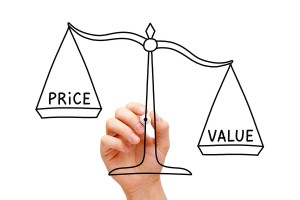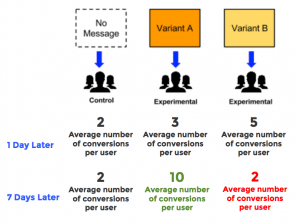Organizations spend thousands (make that hundreds of thousands) of dollars on customer relationship management (CRM) software. Yet getting a positive return on that investment can take time, especially if your employees are loath to use the system — or are not updating customer-related data regularly.
So what can companies do to get the most out of their CRM system? CIO.com asked dozens of CRM and sales automation experts to find out. Their top nine tips for how to improve CRM appear below.
Make the CRM software easy to use for your internal customers, your employees. “Research the potential CRM ROI for every concerned employee and department before CRM purchase,” says Nikolaus Kimla, CEO of Pipelinersales, a provider of sales management software. “Find out what each of them really wants from CRM, and what it needs to do for them. If you skimp on this point, CRM adoption is going to be difficult to say the least,” he says.
Then “design [or customize your CRM] with your end-user in mind,” says Phil Nieman, senior marketing and sales operations manager, SAVO, a provider of sales enablement and social productivity software.
“It’s easy to forget that not everyone works at company headquarters or logs into the system every day. Abbreviated field names may make perfect sense to sales ops, but may leave the field rep confused,” Nieman says. So it’s important to customize your CRM to fit the needs of all end users, or at least the ones who will be using the system most often.
[Related: How the Internet of Things Drives CRM Investments]
“Pay attention to the interface design; human factors are important,” says Alan Baker, president and chief consultant, Spitfire Innovations, a consulting firm. “Group logically related fields together and make sure the flow of the field tabbing makes sense – or hire an expert to help you. Ensure that that the flow of the screens matches the business workflow.” You should also consider using “role-based security rules to hide (or display) fields — and only display the information that is relevant for a given user. It declutters the screen, and it’s an easy way to help manage security/privacy/confidentiality issues with customer data.”
Provide CRM training to all employees.“Companies need to focus on training employees to consistently utilize the CRM effectively, says Miranda Palmer, business consultant, ZynnyMe business coaching. One way to do this is to identify and teach tech savvy or eager employees on the system. Then “schedule regular mastermind sessions to [teach] employees [how to] train their colleagues how to best utilize the CRM for maximum results.”
Track customer behavior throughout the sales cycle. “Before the sales call, gather data about the prospect on social media and identify what types of information they share across channels,” says Loren Padelford, vice president of Marketing, Skura, which provides an adaptive sales enablement platform.
Then after the sales call, “sales reps should keep track of which content resonates the most,” such as “where your customers are clicking, what mobile devices they are using to find content, with which pieces of content they are engaging, for how long, how often, with whom they share that content, and so on,” Padelford says.
“Once you have this level of information, you will not only understand your customer’s current needs but will be able to predict future needs, hone your content accordingly and confidently plan your next approach,” Padelford says
Don’t think of — or use — CRM as a standalone sales automation system. “Too often, companies assume that CRM starts and stops with sales,” says Glenn Burnside, executive vice president of Engineering at Headspring, a provider of tailored software solutions, including CRM.
“As a result, they leave other departments out of the loop, limiting or completely denying them access to the system, and failing to properly integrate their CRM with other client-facing or client-informing systems,” Burnside says. “For example, if you leave your Service Desk and CRM system unintegrated, your front-line support team may not be aware of recent changes to a customer’s status or interactions that the sales team has had with them, so they miss out on a lot of opportunities to engage and build relationships.”
“Companies should never think of CRM as a standalone system,” says Eric Berridge, CEO of Bluewolf, a cloud consultancy. “Strategic integration of customer data from across different business systems can produce a highly personalized and even predictive marketing and sales approach,” he says.
Get in sync. “If your CRM doesn’t automatically sync with your calendar and import all of your client-related meetings, then you should really think about breaking up with it,” says Geoff McQueen, founder and CEO of AffinityLive, a creator of business automation software. “If your CRM doesn’t know about these most important client interactions without you needing to double-enter them yourself (and keep track of changes and cancellations), you’re going to stop trusting it to be accurate.”
A good CRM system should allow you “to schedule an appointment with a client from Outlook, your Google Calendar or your smartphone calendar, send the client an invite and know that your CRM has made a note and record about this client event,” McQueen says.
Keep data up to date. “It’s critical to have a consistent process for updating and managing customer data,” says Holly Anderson, product marketing manager at K2, a provider of business process application software. “It can be difficult to get all your sales reps to enter customer information every time they’re working on a deal, but by providing an easy-to-use application, you can ensure that accurate data is collected every time.”
“CRM systems are only as good as the data housed in them – and data requires investment,” adds Nieman. Organizations need “to spend the time and money to keep the data fresh, clean and up-to-date. And a good place to start is to implement processes to prevent and remove duplicate records, appending and cleaning data with updated firmographic variables and keeping email addresses clean and flagged when they are found to be invalid,” he says. “Remember, your CRM system can be a powerful decision-making tool, but the decisions made are only as strong as the data found in the system.”
Be social. “Integrate your CRM with social media platforms [if it’s not already built into the system],” says Anthony Smith, the founder and CEO of Insightly, a SaaS CRM application. “This allows users to insert a new contact’s email address and detect virtually every social media profile related to the email address. With access to these social media profiles, companies can see where their leads and contacts frequently post.”
“Brands should utilize a real-time social media listening tool like Radian6 or Sysomos to aggregate customer mentions as soon as they are posted online,” says David Neuman, social media manager, Prime Visibility, a full-service digital marketing agency. “Not everyone will post a complaint on a brand’s social media [i.e., Facebook] channel, but might, instead, tweet out about their experience or write about it on a forum website or blog.
“By capturing these conversations in real-time, brands can quickly reach out and resolve issue[s] ASAP.”
Mobilize. “A cloud-based CRM that offers mobile capabilities allows users to easily keep track of customer interactions and manage leads, proposals, opportunities, projects and files from any device, at any time,” says Smith. “For companies with employees that are consistently in and out of the office, this can improve effectiveness and productivity.”
Remember, there is always room for improvement.“There is no better way to keep users feeling good [about your CRM system] than by showing that you are listening to them and acting on the input,” says Mindy Lieberman, vice president of IT at Zendesk, a provider of cloud-based customer service software. “Have a stack-ranked plan for features that are prioritized by business users. Knock them out steadily, and not only will the system continue to get more usable, trust will be developed between business and IT.”
“The design of the CRM application can always be improved,” adds Baker. “Solicit ideas for improvement from internal and external users and then act on the ideas,” he says. Moreover, “make it easy for them to comment. The feedback is invaluable.” Just one caution: “If you ask for feedback, be prepared to act on it.”
Read more on CIO Magazine
(395)







